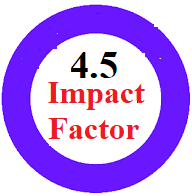ENHANCING ALZHEIMER'S DISEASE CLASSIFICATION USING HYBRID DEEP LEARNING MODELS ON SYNTHESIZED NEUROIMAGING DATA
Keywords:
Alzheimer’s disease, deep learning, medical image analysis, transformer models, pseudo-RGB synthesis, 3D CNN, Swin Transformer, MedViTAbstract
The diagnosis of Alzheimer's Disease (AD) using neuroimaging has difficulties owing to the intricate retrieval of features and the critical need for accuracy within the class boundaries. This research analyzes the effect of applying deep learning model techniques, such as CNNs, Transformers, and 3D CNNs, to a dataset of 16,000 images containing normal and pseudo-RGB synthesized neuroimaging data, including neuroimaging data. The models that were tested were EfficientNetV2, ResNet50, ResNet101, DenseNet121, DenseNet201, Swin Transformer, MedViT and 3D CNN. Their Measurements calculated were accuracy, precision, recall, F1-score, and specificity while the evaluation metrics defined were specific to measuring diagnosis performance. The most important findings are that MedViT outperformed all models with head-turning accuracy of 98.5% while Swin Transformer came second at 97.1% which had better learning of global features. 3D CNN was the lowest performer with 93.5% accuracy and was struggling because of weak handling of volumetric data. The findings Med-Vit models on diagnosed AD offered the best performance indicate that model results confirm that hybrid transformer-CNN architectures, Med-Vit which is a new hybrid model developed with encourages researchers for further researches distracts from the point.
















